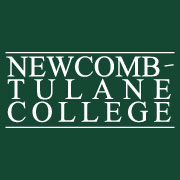In my six weeks in Mérida, Mexico, I researched at the Dr. Hideyo Noguchi Center of Regional Investigations in the Department of Parasitology. This laboratory studies primarily Chagas disease, with its focus either on ecology and vector control of the disease and physiopathology and control of the infection. The first four weeks were spent shadowing a professor and their specific project in the lab. The fifth week was field based work in the villages of the Yucatan. The sixth week was preparation and presentation of a short summary of our experience in Mérida.
In the laboratory, our work was mainly focused on the physiopathology and control of the infection. The first four weeks were spent focusing on learning laboratory techniques specifically aimed at understanding the physiopathology of the parasite and diagnosis techniques. In these weeks, I learned how to conduct various laboratory techniques and analyze the results. The first two weeks were spent performing qPCR, PCR and gel electrophoresis on various rat tissues in order to understand how the parasite disperses throughout the body. The third week I learned how to perform sulfate polyacrylamide gel electrophoresis on serum to search for various biomarkers in proteins. The fourth week in the laboratory we spent time with a veterinarian studying the cardiologic manifestation of the disease in mice using various clinical techniques such as ultrasound and EKG. In these weeks, I was able to gain a full understanding of the various laboratory techniques that are used to understand the clinical picture of a disease.
The fourth and fifth week I spent studying the ecological and vector control of the disease. During the fourth week I worked with a student who was developing a project to understand how animal’s feeding patterns change after being infected with Chagas disease. I was able to understand how one develops a project and the laboratory methodology she decided to use. The fifth week we traveled to three villages that the disease is prevalent in: Chumbac, Sudzal and Teya. The days were spent going door-to-door in the villages, collecting vector samples of the Triatomine bug and interviewing villagers. The nights were spent setting up various traps in the forest to collect vectors. This time allowed me to understand the surveillance epidemiological methods they use to monitor for Chagas disease, and what populations are at risk of contracting it.
Overall, my time in Mexico was extremely beneficial for both my personal and professional growth. Before going to Mexico, my Spanish was at a very basic level, and I had had little to no practice outside of a classroom speaking to people. Additionally, ending the trip with interviewing villagers allowed me to view the progress in my Spanish fluency, and I can confidently say I’m at an advanced level. This research has inspired me to continue my research in vector-borne diseases back at Tulane and has given me the tools to do so successfully. It has also helped me in my decision to pursue my Master’s in Public Health in epidemiology with the combined degree program. Overall, the six weeks I spent in Mexico allowed me to understand what kind of public health professional I would like to become. The funds I received from the Newcomb-Tulane College allowed me to do this by paying for my housing in Mérida, and I am sincerely grateful to have been given this experience.
Written by Sarah Matthews, Dean’s Grant recipient, 2018
